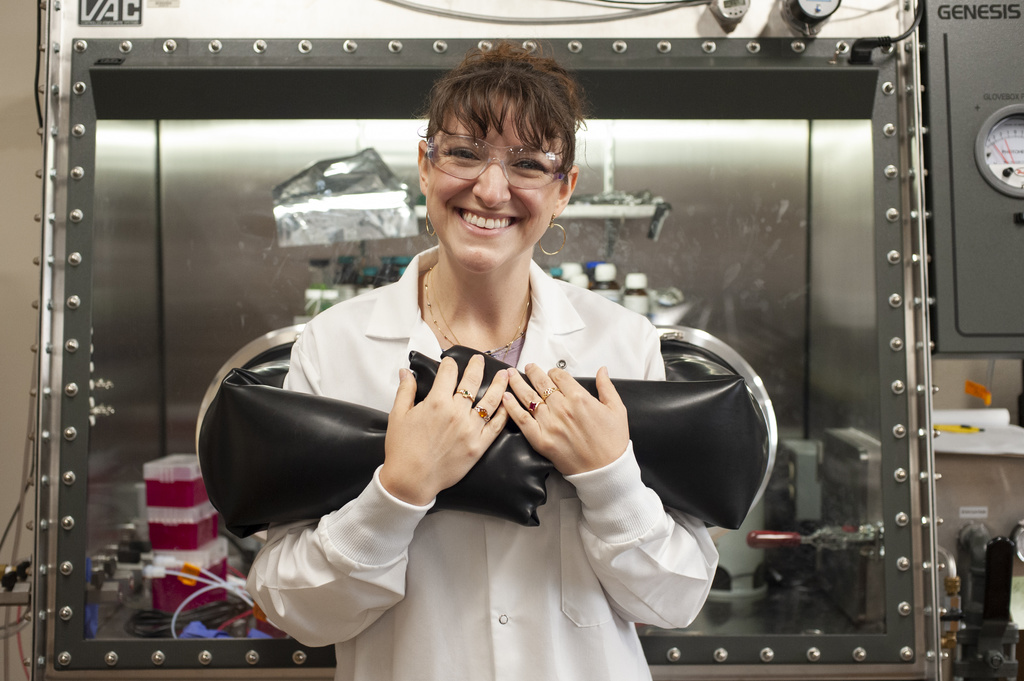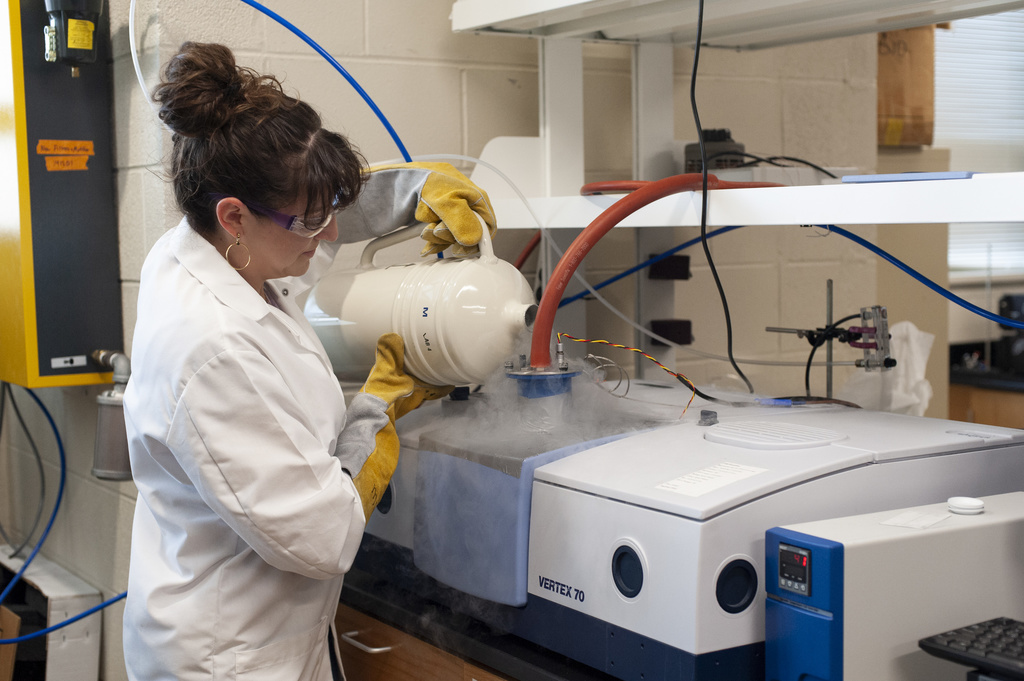
Growing up, Colleen Lasar was drawn to everything STEM.
“I have been driven towards the sciences since I was little,” Lasar describes. “I always enjoyed science and math class, and with two engineers as parents, I had a lot of support at home, especially from my mom.”
Initially, Lasar’s dream was to work for NASA. “I was lucky that my high school offered astronomy classes and that we had a planetarium in our school,” Lasar says.
But, coupling her interest in space, Lasar also had a passion for chemistry.
“When I was trying to figure out what I wanted to study in college, I was torn between a degree in chemistry and a degree in astronomy,” Lasar recalls. Although she was split between her two fields of interest, Lasar decided to pursue astronomy as an undergraduate student.
“About halfway through my undergraduate degree, I realized that even though I loved astronomy, I missed being able to touch the science,” Lasar says. “I wanted to do hands-on science that I could manipulate in the lab.”
Lasar’s desire for tangible science led her to switch her major to chemistry. Upon attending graduate school, Lasar’s research turned towards a unique substance called ionic liquids that have a wide variety of applications, including space technologies.
“I discovered that the door to combine my passion for chemistry and astronomy was still open and my childhood dream of working for NASA was rekindled,” Lasar says.
Versatility of Ionic Liquids
Lasar will further her research on ionic liquids as the recipient of the Graduate College’s Ballard and Seashore Dissertation Fellowship. Specifically, Lasar will continue her work with the Shaw Research Group, which focuses on analytical surface-science. This type of chemistry research entails precise measurements of chemical interactions and behaviors with surfaces. For example, investigating why oil spreading on water looks like a rainbow would be a question that interests the Shaw Research Group.
Principal investigator and Lasar’s advisor, Dr. Scott Shaw, describes their work together. “Other labs make chemicals, and we measure and characterize what those chemicals are and how they behave.”
Within the Shaw Group, Lasar’s research focuses on how those unique substances, ionic liquids, react to variations in temperature or thermal manipulation.
“My research dives into a fundamental study of what happens to different ionic liquids when they're diluted in various solvents and how that's affected by changes in the temperature,” Lasar explains.
To better understand the impact of Lasar’s research, what exactly are ionic liquids?
Lasar explains that ionic liquids are a unique type of salt that have many favorable properties which make them suitable for a variety of applications. Most notably, where many salts, like sodium chloride (table salt), have very high melting points, ionic liquids remain liquid at room temperature. Some even remain liquid at temperatures as low as negative 150 degrees Celsius. Even though ionic liquids are liquids, they are highly resistive to evaporation. Because of this distinctive property, they function very well in a vacuum, making them ideal for space technologies like spacecraft propellants, energy storage on spacecrafts, and spacecraft lubricants.
“The more we learn about ionic liquids, the more we realize we can use them for different applications across the sciences,” Lasar says.
Ionic liquid research is a relatively recent development within the field of chemistry, emerging only about 50 years ago. “Scientists are still working to understand the properties of ionic liquids and how they interact with other solvents,” Shaw explains. “They’re very useful for a variety of applications like batteries or capacitators to store energy.”
Therefore, Lasar’s research not only has important implications for space technologies, but also impacts energy storage and has applications for enhancing renewable energy sources in the state of Iowa.
“We're in the Midwest, and as you know, it gets cold in the winter,” Lasar describes. “So, if we're using these ionic liquid solvents as lubricants in wind turbines or as electrolytes for energy storage on a solar farm, how is the solvents’ ability to function affected when it gets really cold or extremely hot?”
Leadership in the Lab and Lasar’s Next Steps
Shaw notes the significance of Lasar’s leadership as the senior member of the lab.
“She knows how things function and is always willing to answer questions from younger lab members,” Shaw says. “Her leadership has been valuable to me and for the whole group.”
Alongside her broader leadership within the group, Lasar also mentored three younger female undergraduate students in the Shaw lab.
“As a woman in STEM, it was great mentoring other women in the Chemistry Department and watching them grow as independent scientists,” Lasar says.
Before Lasar begins her Ballard and Seashore Fellowship at Iowa next Spring, she will be taking her science skills abroad, conducting research in Japan.

“After receiving notification that I was the recipient of the Ballard and Seashore Fellowship, I also received notification that I was accepted into an internship with the Japanese National Institute of Advanced Industrial Science and Technology,” Lasar says. “This is a once in a lifetime opportunity and I am so grateful to Graduate College Dean, Dr. Amanda Thein, for ensuring that I could pursue both the fellowship in Iowa and the internship in Japan.”
In Japan, Lasar’s research will investigate surface coatings that prevent the formulation of ice.
“When snow accumulates on solar farms in the winter, it can prevent the sunlight from reaching the solar panels. Creating an anti-icing coating can help with this problem, as well as preventing other issues a buildup of snow or ice can cause,” Lasar explains. “My research seeks to find an optimal self-healing coating to prevent the accumulation of snow and ice on surfaces, and ionic liquid mixtures could be the key.”
Lasar describes her internship in Japan followed by her fellowship in Iowa as an ideal way to end her graduate career. As Lasar continues her work with ionic liquids, the potential impact of her research extends from improving energy storage in Iowa to enhancing technologies in space.